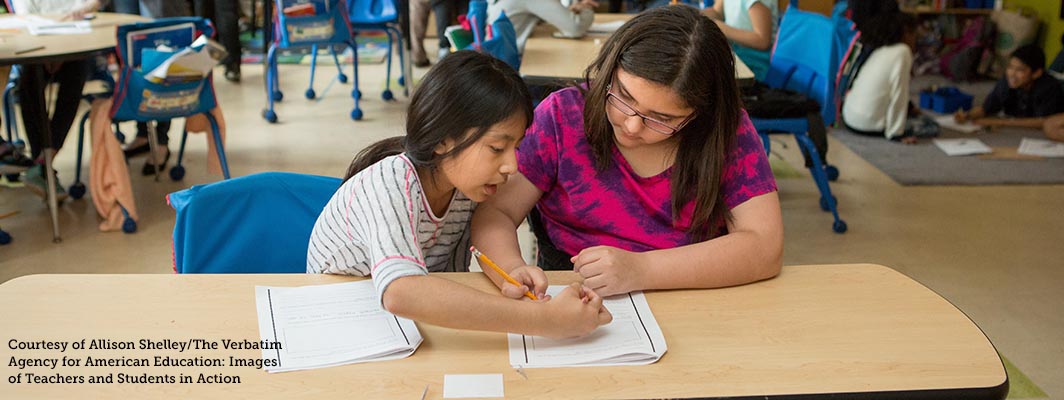
June 21, 2018 | By Wendy Xiao
To help teachers support all of their students in reaching writing proficiency, Digital Promise Global’s Learner Variability Project (LVP) team has worked with Steve Graham to communicate a set of research-based writing strategies that can be applied to support every writer, from those who already see themselves as writers to others who are less confident but can thrive with additional support. These strategies are called the Self-Regulated Strategy Development (SRSD) approach.
Direct Instruction: Writing and Genre-Specific Strategies
Research has shown the importance of explicitly teaching writing strategies, such as choosing more descriptive words, and genre-specific strategies for crafting narrative, expository, and persuasive writing. These strategies can improve the quality, length, and structure of students’ writing.
Through scaffolded instruction, teachers can discuss and model a strategy, have students practice it with support from teachers or peers, and, when they are ready, let students independently practice and implement the strategy. Over time students will master a set of writing strategies that they can flexibly utilize to help them write effectively. Teaching these strategies not only enhances students’ writing but also improves their reading comprehension. This reciprocal relationship between writing and reading–writing to read and reading to write–underscores the importance of teaching both to foster strong literacy skills.
Metacognitive Supports: Goal Setting, Self-Instructions, Self-Monitoring, and Self-Reinforcement
What makes SRSD so powerful and effective is the combination of writing and self-regulation strategies, which we call metacognitive supports. Students in fourth to sixth grade are continuing to develop their abilities to self-regulate their thought processes, to think about their thinking, and to have agency and voice in their learning. Offering metacognitive supports deepens students’ understanding and ownership of their thinking, leading to better writing planning. More importantly, as students take this ownership and internalize these strategies, they begin to see themselves as confident writers with a toolbox of strategies to tackle any writing challenge.
Identifying as Confident Writers
Writing for authentic audiences and purposes is the final step to helping students truly value their writing. When students write about things they feel passionate about for real-world audiences, they will feel more positive about their writing and are motivated to write more.
When each student feels confident in their writing skills and emotionally invested in their writing, teachers have helped them become true writers. Research has shown that this bundle of strategies can help create a writing community in the classroom that will support every student in their individual paths to finding their identities as writers.
We are committed in our work on the Learner Variability Project (LVP) team to helping educators understand and support the full diversity of learners. We are excited to present how the individual research-based resources on the LVP web app can work together to help teachers fully support the variability of all their learners.
By Lauren McMahon and Heather Dowd